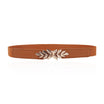Rath Yatra, also known as the Festival of Chariots, is a grand celebration deeply rooted in Hindu tradition and observed with great fervor in the coastal state of Odisha, India. The festival is dedicated to Lord Jagannath, the deity of the Jagannath Temple in Puri. With its elaborate processions, magnificent chariots, and millions of devotees, Rath Yatra stands as a symbol of devotion, unity, and the vibrant cultural heritage of India. In this blog post, we will explore the fascinating history, vibrant traditions, and the essence of Jagannath culture associated with this auspicious festival.

History of Rath Yatra:
The origins of Rath Yatra can be traced back thousands of years. The festival finds its roots in the ancient scriptures of Hinduism, particularly the Skanda Purana, where the celestial origins of Lord Jagannath are mentioned. According to the legends, Lord Jagannath, along with his siblings Lord Balabhadra and Devi Subhadra, leave the inner sanctum of the Jagannath Temple once a year to visit their aunt's temple, the Gundicha Temple. This journey of the deities on chariots is celebrated as Rath Yatra.

Traditions of Rath Yatra:
-
Chariot Construction: Weeks before the festival, skilled artisans construct three massive chariots using traditional techniques. The chariots, named Nandighosa (for Lord Jagannath), Taladhwaja (for Lord Balabhadra), and Darpadalana (for Devi Subhadra), are beautifully decorated with bright colors, intricate carvings, and auspicious symbols.
-
Snana Purnima: The festival begins with the Snana Purnima, where the deities are ceremonially bathed with 108 pots of scented water. Devotees believe that this ritual cleanses and purifies the deities for their journey.
-
Chhera Pahanra: On the day of the Rath Yatra, the Gajapati Maharaja, the king of Puri, sweeps the chariots with a golden broom and offers prayers. This act symbolizes the equal status of all individuals before God and signifies the importance of humility.
-
Rath Yatra Procession: The main event of Rath Yatra is the grand procession in which the deities are taken from the Jagannath Temple to the Gundicha Temple, located around 3 kilometers away. Devotees enthusiastically pull the ropes of the chariots, chanting religious hymns and dancing in joyous celebration. The atmosphere is electric, with thousands of people gathered to catch a glimpse of the deities and seek their blessings.
Jagannath Culture
The Jagannath culture encompasses the unique practices, beliefs, and art forms associated with Lord Jagannath and the Rath Yatra festival. It reflects the deep-rooted spiritual devotion and the artistic traditions of the region. Some notable aspects of Jagannath culture include:
-
Odissi Dance: Odissi, one of the classical dance forms of India, has deep connections with Lord Jagannath and is often performed during Rath Yatra. The dance captures the divine love and devotion of the Gopis (cowherd girls) towards Lord Krishna, who is believed to be an incarnation of Lord Jagannath.
-
Pattachitra: Pattachitra, a traditional art form of Odisha, features intricate paintings on cloth depicting various stories from Hindu mythology, including scenes from the life of Lord Jagannath. The vibrant colors and meticulous detailing make it a significant part of Jagannath culture.
-
Mahaprasad: The Mahaprasad (divine food) offered to Lord Jagannath is considered sacred and is an integral part of the Jagannath culture. It is prepared in the temple kitchen and served to millions of devotees during Rath Yatra. The belief is that the Mahaprasad carries the blessings of Lord Jagannath.
Rath Yatra, with its rich history, vibrant traditions, and the captivating Jagannath culture, is an awe-inspiring celebration that brings people together in devotion and joy. The festival serves as a reminder of the importance of unity, humility, and spirituality. Rath Yatra continues to mesmerize and captivate people from all walks of life, offering a glimpse into the cultural tapestry and deep-rooted traditions of India. Rath Yatra is celebrated across the globe by the devotees of Lord Jagannath and ISCON.
Rath Yatra FAQs: A Comprehensive Guide to the Festival of Chariots
Rath Yatra, also known as the Festival of Chariots, is a prominent Hindu festival celebrated with great enthusiasm in the coastal state of Odisha, India. The festival showcases magnificent processions, ornate chariots, and a divine ambiance that captivates both devotees and curious observers. In this blog post, we provide a collection of frequently asked questions (FAQs) to offer a comprehensive understanding of Rath Yatra.
-
What is Rath Yatra?
-
Rath Yatra is an annual festival dedicated to Lord Jagannath, Lord Balabhadra, and Devi Subhadra, the presiding deities of the Jagannath Temple in Puri. It commemorates the ceremonial journey of the deities from their temple to the Gundicha Temple, the dwelling place of their aunt.
-
When is Rath Yatra celebrated?
-
Rath Yatra takes place on the second day of the bright fortnight in the Hindu month of Ashadha, typically falling in June or July according to the Gregorian calendar.
- When will Rath Yatra be celebrated in 2023?
- Rath Yatra will be celebrated on 20th June 2023.
-
Where does Rath Yatra occur?
-
Rath Yatra is primarily celebrated in Puri, a city located in the state of Odisha, India. The processions commence from the Jagannath Temple and culminate at the Gundicha Temple.
-
What are the main rituals associated with Rath Yatra?
-
The key rituals of Rath Yatra involve the construction and adornment of the chariots, Snana Purnima (the ceremonial bathing of the deities), Chhera Pahanra (sweeping of the chariots by the Gajapati Maharaja, the king of Puri), and the grand procession of the deities on the chariots.
-
How are the chariots constructed?
-
The construction of the three colossal chariots, named Nandighosa (for Lord Jagannath), Taladhwaja (for Lord Balabhadra), and Darpadalana (for Devi Subhadra), involves skilled artisans utilizing traditional techniques and adhering to specific measurements. These wooden chariots are beautifully adorned with vibrant colors, intricate carvings, and auspicious symbols.
-
Can devotees participate in pulling the chariots?
-
Yes, pulling the chariots is considered a sacred privilege and an act of devotion. Thousands of devotees eagerly participate by pulling the long ropes attached to the chariots, chanting religious hymns, and expressing their love for the deities.
-
What is the significance of Rath Yatra?
-
Rath Yatra signifies the unity of all devotees in their devotion to Lord Jagannath and emphasizes the belief that the divine grace of the Lord is accessible to everyone, irrespective of social or religious differences. Participating in the Rath Yatra procession and catching a glimpse of the deities' chariots is believed to bestow blessings and spiritual elevation.
-
Are there any cultural events associated with Rath Yatra?
-
Rath Yatra is accompanied by various cultural events, including performances of classical dance forms such as Odissi and traditional music. Artists and artisans showcase their talents through exquisite displays of Pattachitra (traditional cloth paintings) and other art forms, infusing the festival with vibrancy.
-
Is Mahaprasad offered during Rath Yatra?
-
Yes, Mahaprasad, the sacred food offered to Lord Jagannath, is an integral part of Rath Yatra. Devotees eagerly partake in Mahaprasad, considering it sanctified by the blessings of the deities.
-
Can non-Hindus participate in Rath Yatra?
-
Rath Yatra welcomes individuals from all faiths and backgrounds. Non-Hindus are encouraged to witness and experience the grandeur of the festival while respecting its customs and traditions.
Rath Yatra, with its profound significance, captivating rituals, and rich cultural heritage, continues to enthrall devotees and visitors alike. This compilation of frequently asked questions provides valuable insights into the essence and celebration of Rath Yatra, inviting everyone to explore and appreciate the cultural magnificence of this remarkable festival.
Read our other blog posts on Fathers Day gift ideas. Explore gifting ideas for Men & Women.




















Leave a comment
All comments are moderated before being published.
This site is protected by hCaptcha and the hCaptcha Privacy Policy and Terms of Service apply.